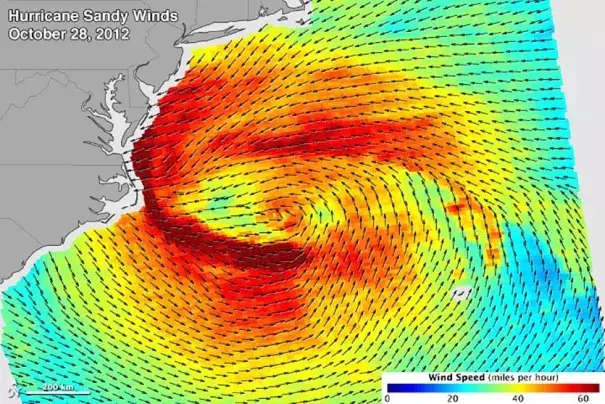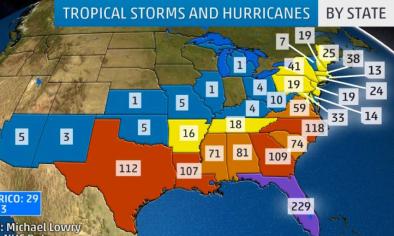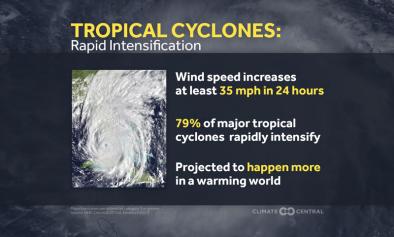Will Global Warming Create Larger Hurricanes?

As the planet warms, the extra heat and moisture available to hurricanes are expected to make them more destructive. Computer modeling work consistently indicates that greenhouse warming will increase the average intensity of global tropical cyclones by 2 - 11% by 2100, with an increase in the number of Category 4 and 5 storms (though the majority of the models predict that the number of weaker tropical cyclones will decrease). Global warming is also expected to make tropical cyclones rainier, with up to 20% more precipitation falling within 100 km of the storm center. But how might the areal size of these great storms change in our warming climate? Storm size is a crucial factor in determining how large a hurricane’s storm surge will be and how much damage it will cause. With hurricane storm surges progressively riding inland on top of ever-increasing sea levels, any increase in storm size could greatly increase storm surge damage. We are just beginning to study how storm size may change with global warming, but preliminary model results I heard last week at the American Meteorological Society’s 33rd Conference on Hurricanes and Tropical Meteorology showed that we may well have to reckon with an increase in storm size causing additional destruction by Atlantic hurricanes as the climate warms. The uncertainties are high, though, and there is no evidence that storms have been getting bigger since 1981
Related Content






